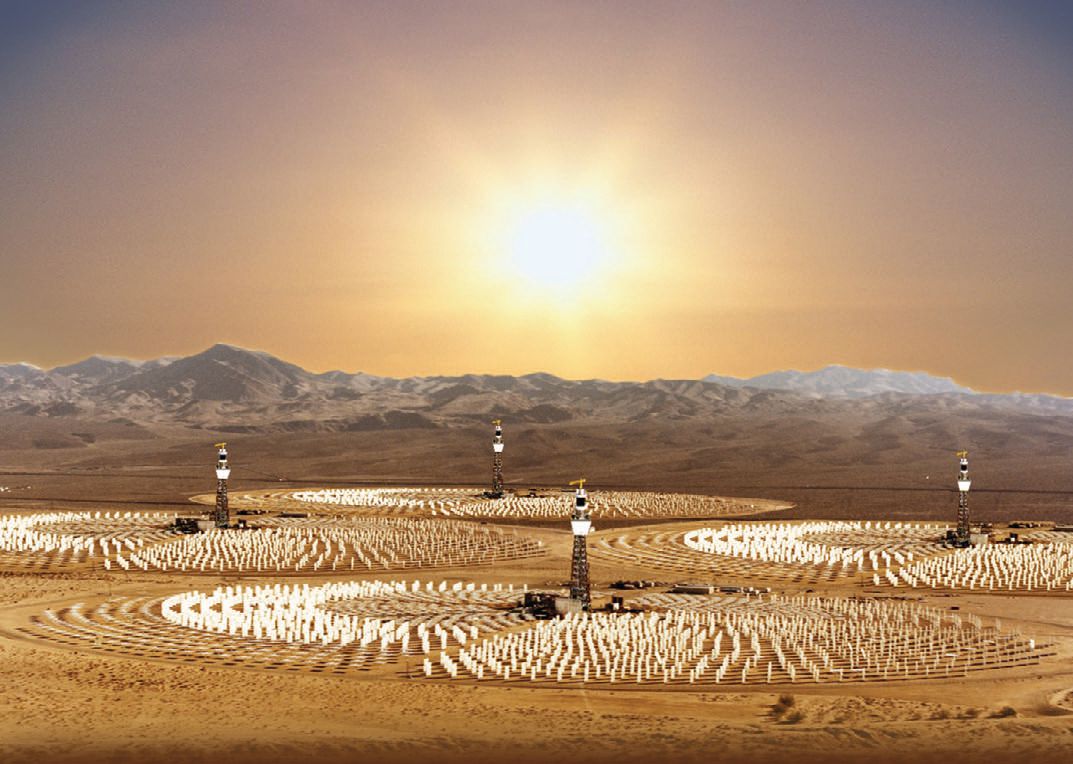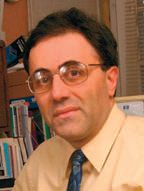Splitting water with solar energy
Dr. Neil Canter, Contributing Editor | TLT Tech Beat November 2013
A new process has the potential to more efficiently produce hydrogen and oxygen.
KEY CONCEPTS
•
Efficient production of hydrogen through the direct splitting of water is not commercially feasible.
•
Solar thermal water splitting has been developed to split water through the use of two distinct reactions catalyzed by a metal oxide that produce hydrogen and oxygen separately.
•
A new approach known as isothermal water splitting has been developed that more efficiently produces hydrogen and oxygen with a group of cobalt, iron and aluminum metal oxides at the same temperature in an open system under atmospheric pressure.
PRODUCING HYDROGEN EFFICIENTLY through the splitting of water remains a major renewable energy objective. Hydrogen then can reform water upon combustion, setting the stage for further splitting. The problem has been finding a procedure for effectively manufacturing renewable hydrogen.
Fuel cell development has been underway as a means to efficiently produce electricity. The problem has been the main catalyst used, platinum, is not durable. In a previous TLT article, a new fuel cell catalyst that contained a monolayer of platinum on palladium nanoparticles was discussed (
1). Testing showed that this catalyst only lost 37 percent of its reactivity over 100,000 cycles, which represents a substantial upgrade in performance.
Renewable hydrogen for the fuel cell can be produced using an electrolyzer to split water where the required electricity is supplied from a photovoltaic cell. Research on capturing solar energy continues through the use of the photovoltaic effect. The usual material used is silicon, but in a recent article research showed that organic solar cells prepared from naturally derived cellulose nanocrystals are potential options (
2). The process is not as efficient as desired since the overall efficiency is dependent on both the efficiency of the photovoltaic cell, as well as electrolysis.
Using solar energy to split water directly is not feasible. Alan Weimer, H.T. Sears Memorial Professor in the department of chemical and biological engineering at the University of Colorado in Boulder, Colo., says, “Direct use of solar energy to split water in a thermolysis reaction is not practical because it requires a temperature of 3,000 C. No currently commercial materials can handle this high temperature.”
A process called solar thermal water splitting (STWS) has been developed that combines using the energy obtained from the sun to split water into hydrogen and oxygen. In STWS, water is split in two distinct reactions using a metal oxide catalyst. In the first step, the catalyst is reduced at an elevated temperature with the release of oxygen. The second step involves an oxidation process in which the reduced metal oxide catalyst is reacted with water to produce hydrogen and the original metal oxide catalyst, which then can go through another cycle.
Weimer says, “The advantage of STWS is that the water splitting process is divided into two reactions where hydrogen and oxygen are produced separately and the required maximum temperature of reduction is reasonable. This makes the process feasible and a straightforward way to isolate both of them. But the disadvantage of conventional STWS is that there is a wide temperature gap between the two steps in the cycle.”
The oxidation reaction is currently run at a temperature of 1,500 C, while the reduction reaction is run at a temperature of 1,100 C, effectively swinging the temperature by about 400 C. This STWS process is known as temperature swing water splitting (TSWS). Weimer contends that this temperature difference means that a considerable amount of energy must be used to boost the reactor temperature back up to 1,500 C. In addition, time also can be wasted waiting for the temperature to rise, which is critical, particularly since there is only a finite amount of sunlight on any given day.
If the negative characteristics of TSWS can be minimized, then potentially a commercially feasible process may be possible. Such an approach has now been developed.
ISOTHERMAL WATER SPLITTING
Weimer and his associates utilize a group of cobalt, iron and aluminum oxides to conduct both the oxidation and reduction reactions at the same temperature in a process known as isothermal water splitting. Hercynite is an intermediate in the process that has been termed the “hercynite cycle” for this reason.
Weimer says, “We determined that oxygen and hydrogen can both be produced through the use of “hercynite cycle” active metal oxides at a temperature of 1,350 C. The initial catalyst used was a combination of cobalt ferrite and aluminum oxide.”
During the reduction process, heating the two oxides leads to the generation of oxygen gas and the intermediates, cobalt aluminate and hercynite. Oxidation of these two reduced oxide intermediates in the presence of steam leads to the formation of hydrogen and the original two oxides, which can be used to split another water molecule.
Besides supplying the heat for both reactions, solar energy can be used to convert water in the reactor to steam for use in the oxidation process. One of the keys to driving the process is to increase the partial pressure of the steam, which directly leads to an increase in the hydrogen produced.
Several factors favor the commercialization of isothermal water splitting. The process is much simpler than TSWS and can be conducted in an open system under atmospheric pressure. Weimer says, “The hercynite metal oxides can be produced in a relatively easy fashion.”
Catalyst durability is very important to ensure the process can be repeated without a reduction in performance. Weimer says, “We ran 200 cycles and found no evidence of degradation after conducing spectral analysis. The metal oxides used are theoretically stable compounds that can be used hundreds of times without any problems.”
Figure 2 displays what a possible hydrogen production plant might look like with each tower used to concentrate sunlight collected from a series of adjacent mirrors. Weimer says, “We envision that a series of reactor tubes that are about 0.3 meter wide and 0.6 meter long could be prepared with metal oxide catalyst and stacked on top of each other. To maximize productivity, half of the tubes would do the oxidation process, while the other half would do the reduction. Once the first reaction is completed, the tubes would switch to run the other process.”
 Figure 2. A possible commercial hydrogen production plant utilizing isothermal water splitting may contain a series of mirrors used to capture solar energy, which is then concentrated in the towers where the hydrogen splitting process takes place. (Courtesy of the University of Colorado at Boulder)
Figure 2. A possible commercial hydrogen production plant utilizing isothermal water splitting may contain a series of mirrors used to capture solar energy, which is then concentrated in the towers where the hydrogen splitting process takes place. (Courtesy of the University of Colorado at Boulder)
Additional information can be found in a recent article (
3) or by contacting Weimer at
Alan.Weimer@colorado.edu.
REFERENCES
1.
Canter, N. (2011), “Stable Fuel Cell Catalyst,” TLT,
67 (2), pp. 12-13.
2.
Canter, N. (2013), “Recyclable Organic Solar Cells,” TLT,
69 (7), pp. 12-13.
3.
Muhich, C., Evanko, B., Weston, K., Lichty, P., Liang, X., Martinek, J., Musgrave, C. and Weimer, A. (2013), “Efficient Generation of H
2 by Splitting Water with an Isothermal Redox Cycle,”
Science,
341 (6145), pp. 540-542.
 Neil Canter heads his own consulting company, Chemical Solutions, in Willow Grove, Pa. Ideas for Tech Beat items can be sent to him at neilcanter@comcast.net
Neil Canter heads his own consulting company, Chemical Solutions, in Willow Grove, Pa. Ideas for Tech Beat items can be sent to him at neilcanter@comcast.net.